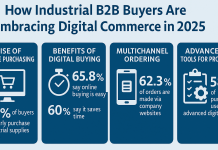In today’s digital-first B2B landscape, businesses rely on multiple platforms—CRM systems, ERP tools, marketing automation software, and analytics dashboards—to drive operations and growth. But when these systems operate in isolation, they create fragmented data environments that hinder decision-making and productivity. That’s where data integration in B2B becomes critical.
Integrating data from various sources ensures real-time visibility, consistency, and streamlined workflows across departments. However, this is easier said than done. Many B2B organizations face significant roadblocks when trying to connect disparate systems. In this blog, we’ll explore the key challenges of B2B data integration and offer practical solutions to help businesses overcome them.
Why Data Integration Matters in B2B
Before diving into the challenges, let’s briefly look at why integration is vital:
- Improved decision-making: A unified data view provides accurate insights for leadership.
- Enhanced customer experience: Integrated systems allow for seamless customer interactions across touchpoints.
- Operational efficiency: Reduces manual effort, duplication, and delays.
- Sales and marketing alignment: Synchronizes lead data, campaign performance, and customer journeys.
Common Challenges in B2B Data Integration
1. Data Silos Across Departments
The Problem:
Sales, marketing, customer support, and finance often use different systems, resulting in data silos. Information becomes inconsistent, duplicated, or outdated, making it difficult to form a single source of truth.
Solution:
- Implement a centralized data warehouse or lake (e.g., Snowflake, BigQuery).
- Encourage cross-functional collaboration to define shared data definitions.
- Use middleware or integration platforms like MuleSoft, Zapier, or Dell Boomi to connect systems.
2. Inconsistent Data Formats and Standards
The Problem:
Different platforms structure and store data differently. For example, a customer might be listed as “Company Name” in one system and “Client Name” in another.
Solution:
- Create a master data model with standardized fields and naming conventions.
- Use data transformation tools during ETL (Extract, Transform, Load) processes.
- Invest in data mapping tools that reconcile inconsistencies automatically.
3. Legacy Systems and Outdated Infrastructure
The Problem:
Many B2B companies still use legacy CRM or ERP systems that lack modern APIs, making integration difficult or even impossible.
Solution:
- Gradually migrate to modern, API-friendly platforms with scalable cloud architecture.
- In the interim, use integration brokers or custom-built connectors.
- Prioritize modernization for high-value systems affecting revenue and customer engagement.
4. Security and Compliance Risks
The Problem:
Data integration introduces potential vulnerabilities if access controls and encryption are not properly implemented. In industries like finance and healthcare, compliance is critical.
Solution:
- Use secure, encrypted protocols (e.g., HTTPS, SFTP) for data transfers.
- Apply role-based access control (RBAC) across integrated systems.
- Ensure compliance with standards like GDPR, HIPAA, or ISO 27001, depending on your region and industry.
5. Scalability Issues
The Problem:
As your B2B organization grows, so does your data volume. An integration strategy that works today may not scale well tomorrow.
Solution:
- Choose cloud-native integration tools with auto-scaling capabilities.
- Implement microservices architecture for modular, scalable integration.
- Monitor performance metrics like latency, API failure rates, and data sync intervals to ensure long-term scalability.
6. Lack of Internal Expertise
The Problem:
Integrating complex systems requires technical know-how that many small or mid-sized B2B firms may not have in-house.
Solution:
- Partner with third-party consultants or system integrators experienced in B2B environments.
- Train internal teams on modern integration tools and best practices.
- Choose low-code/no-code platforms for quick wins with minimal technical intervention.
Real-World Use Case: Integration Success
A B2B logistics company integrated its CRM (Salesforce), ERP (SAP), and marketing automation tool (HubSpot) using a middleware platform. By mapping shared data fields and automating lead handovers between marketing and sales, the company achieved a 25% increase in sales productivity and significantly reduced manual errors in quoting and invoicing.
Best Practices for Smooth B2B Data Integration
- Start small and scale: Begin with high-impact use cases like CRM and marketing data, then expand.
- Document everything: Maintain a detailed log of system connections, data flows, and API usage.
- Continuously monitor: Use dashboards to track data accuracy, latency, and integration health.
- Engage stakeholders: Align business and IT teams for shared ownership of integration outcomes.
Conclusion
Data integration in B2B is essential for driving collaboration, enhancing efficiency, and delivering better customer experiences. While the challenges are real—from siloed data and inconsistent formats to security concerns—they’re not insurmountable. With the right tools, governance, and strategy in place, B2B organizations can unify their data ecosystems and unlock significant business value.
I hope you found this content helpful. For more such information, visit B2B Reports.










